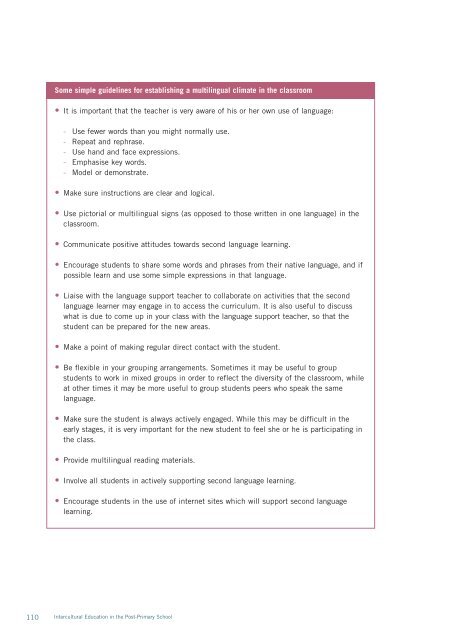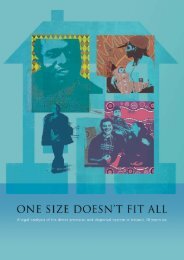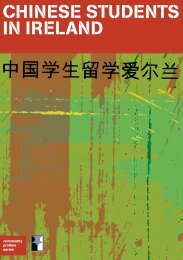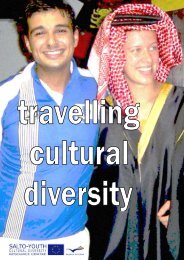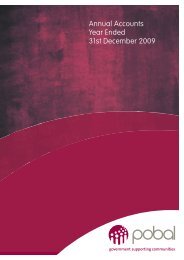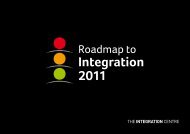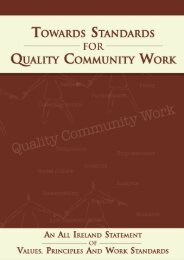Intercultural Education in the Post-Primary School - National Council ...
Intercultural Education in the Post-Primary School - National Council ...
Intercultural Education in the Post-Primary School - National Council ...
Create successful ePaper yourself
Turn your PDF publications into a flip-book with our unique Google optimized e-Paper software.
Some simple guidel<strong>in</strong>es for establish<strong>in</strong>g a multil<strong>in</strong>gual climate <strong>in</strong> <strong>the</strong> classroom• It is important that <strong>the</strong> teacher is very aware of his or her own use of language:- Use fewer words than you might normally use.- Repeat and rephrase.- Use hand and face expressions.- Emphasise key words.- Model or demonstrate.• Make sure <strong>in</strong>structions are clear and logical.• Use pictorial or multil<strong>in</strong>gual signs (as opposed to those written <strong>in</strong> one language) <strong>in</strong> <strong>the</strong>classroom.• Communicate positive attitudes towards second language learn<strong>in</strong>g.• Encourage students to share some words and phrases from <strong>the</strong>ir native language, and ifpossible learn and use some simple expressions <strong>in</strong> that language.• Liaise with <strong>the</strong> language support teacher to collaborate on activities that <strong>the</strong> secondlanguage learner may engage <strong>in</strong> to access <strong>the</strong> curriculum. It is also useful to discusswhat is due to come up <strong>in</strong> your class with <strong>the</strong> language support teacher, so that <strong>the</strong>student can be prepared for <strong>the</strong> new areas.• Make a po<strong>in</strong>t of mak<strong>in</strong>g regular direct contact with <strong>the</strong> student.• Be flexible <strong>in</strong> your group<strong>in</strong>g arrangements. Sometimes it may be useful to groupstudents to work <strong>in</strong> mixed groups <strong>in</strong> order to reflect <strong>the</strong> diversity of <strong>the</strong> classroom, whileat o<strong>the</strong>r times it may be more useful to group students peers who speak <strong>the</strong> samelanguage.• Make sure <strong>the</strong> student is always actively engaged. While this may be difficult <strong>in</strong> <strong>the</strong>early stages, it is very important for <strong>the</strong> new student to feel she or he is participat<strong>in</strong>g <strong>in</strong><strong>the</strong> class.• Provide multil<strong>in</strong>gual read<strong>in</strong>g materials.• Involve all students <strong>in</strong> actively support<strong>in</strong>g second language learn<strong>in</strong>g.• Encourage students <strong>in</strong> <strong>the</strong> use of <strong>in</strong>ternet sites which will support second languagelearn<strong>in</strong>g.110<strong>Intercultural</strong> <strong>Education</strong> <strong>in</strong> <strong>the</strong> <strong>Post</strong>-<strong>Primary</strong> <strong>School</strong>


